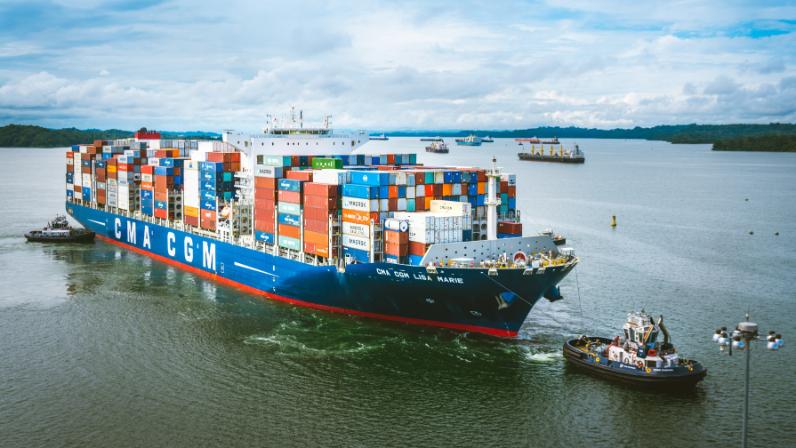
A container vessel transports the majority of the world’s cargo. The sizes and dimensions of the vessels vary, which limits where they may and cannot travel. Not only that but several types of ships are dedicated to specific commodities and cargo types. Our Freight Forwarding Experts provide a concise overview of the current state of the shipping industry.
A Brief History of Container Vessels
If you’ve read our other post on container vessel kinds and sizes, you’ll know that
When it comes to container sizes, you should know that the first container vessel was a converted tanker vessel (more on these ships below), the Ideal X, which traveled from New Ark, New Jersey to Houston, Texas on April 26th, 1955. It transported around 60 containers, 35-foot trailers with removed chassis.
Today’s largest containerships can transport more than 20,000 twenty-foot equivalent units (TEUs). A 20-foot container equals one TEU, and a 40-foot container equals two TEU, implying that big containerships transport thousands of containers. Containerships have made incredible technological advances and grown in size! The ability to carry more goods onto a single ship improves efficiency and, as a result, cuts carbon emissions. The containership’s appeal stems from the standard ISO container’s multi-modal quality, which may be loaded onto trucks, barges, or transported by rail.
Modern containerships’ holds (the space where cargo is housed) are divided into bays by cell guides (they are also known as cellular ships).
whereby crane operators can place the 20- and 40-foot containers snugly This allows for efficient and quick loading. Every deep-sea container’s hold is capped with a hatch cover, which improves the ship’s stability and safety.
Container vessels vary in size and construction to accommodate particular equipment and commodities such as reefer containers or hazardous goods, although it is worth noting that some may be equipped with cranes. Such ships are known as geared (as opposed to gearless ships, which do not have a crane) or lift-on/lift-off ships (LoLo). While this allows these vessels to enter ports without cranes, these are becoming increasingly rare — as are LoLo containerships.
Today, the way the port’s superstructure has evolved allows for quick and easy loading of containerships. Tide, water depth, and port basin size, availability of pilots and tug boats, size and reach of (gentry) cranes, availability of van carriers or reach stackers, hinterland connectivity (road, rail, and waterways), and customs facilities all work together to make container shipping possible.



